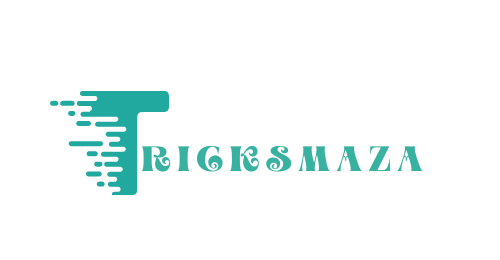Gallery Dept., a Los Angeles-based fashion label, is known for its avant-garde approach to streetwear. Founded by Josué Thomas, the brand has garnered a cult following by blending art, fashion, and design into a distinctive style that emphasizes individuality and creative expression. What sets Gallery Dept. apart from other streetwear labels is its ability to turn vintage clothing into modern, art-inspired pieces. The brand’s DIY aesthetic, combined with an intense focus on craftsmanship, has made it a standout in the fashion world. But what really happens behind the scenes? What’s the creative process that turns a simple vintage garment into a coveted, high-fashion piece?
Visionary Founder: Josué Thomas
To understand the creative process at Gallery Dept., it’s essential to first look at the mind behind the brand—Josué Thomas. Thomas, who originally aspired to be a visual artist, has always viewed clothing as a canvas. His artistic background plays a significant role in how he approaches fashion. For Thomas, Gallery Dept. is an extension of his artwork. He has often described his process as being similar to that of a painter, working with clothing in the same way an artist works with paint. His primary aim isn’t to create clothes but to create art that can be worn.
Thomas’s vision for Gallery Dept. is to push the boundaries of what fashion can be. He’s less concerned with adhering to the rules of the fashion industry and more focused on creating something that feels authentic, rebellious, and completely unique. This mindset is the driving force behind the brand’s aesthetic and its creative process.
The Beginning: Sourcing Vintage Garments
Gallery Dept.’s creative process starts with sourcing vintage clothing, a foundational element of the brand’s identity. Instead of designing pieces from scratch, Thomas and his team scour vintage stores, thrift shops, and flea markets for pre-existing garments that have potential. These items often come with a sense of history, which aligns with the brand’s focus on storytelling and craftsmanship.
The garments chosen are not just random selections. Each piece is carefully considered for its material, structure, and potential for transformation. Whether it’s a pair of vintage Levi’s jeans, a worn-out work jacket, or a faded band T-shirt, the items sourced serve as the blank canvas for the creative process to unfold. By reworking vintage pieces, Gallery Dept. not only gives new life to old clothes but also promotes sustainability in fashion, a key part of the brand’s ethos.
Deconstruction: The First Step of Transformation
Once the garments have been selected, the deconstruction process begins. This is where the real artistry happens. Gallery Dept. doesn’t just repurpose vintage clothing—they reinvent it. The deconstruction phase is about breaking down the garments to their core components—whether that means cutting, ripping, or tearing them apart. It’s a deliberate process aimed at finding the garment’s potential for something new.
For Josué Thomas, deconstruction is about freedom. By stripping the garment down, it loses its previous identity, and that’s when the creativity can truly take over. This part of the process reflects the brand’s anti-establishment attitude, where breaking the rules of traditional fashion allows for unexpected, innovative results.
Deconstruction also serves as a metaphor for the brand’s philosophy: destruction is a precursor to creation. What might look like chaos to some is, in fact, the starting point for something extraordinary.
Reassembly: Crafting Something New
After deconstruction comes the reassembly phase, where the deconstructed garment is pieced back together into something entirely new. This phase is where the vision of the designer comes to life. The team at Gallery Dept. takes great care in how the pieces are sewn, stitched, and sometimes even painted or dyed to transform the garment into a wearable work of art.
The reassembly process often involves juxtaposing different elements—like combining vintage denim with fabric patches, hand-drawing graphics onto shirts, or distressing jackets in a way that feels intentional but not overdone. Each piece is unique and tells its own story. While the brand has signature looks—like its hand-painted jeans and oversized, distressed hoodies—no two pieces are exactly the same.
The beauty of Gallery Dept. is its imperfection. Each stitch, each patch, and each brushstroke is done by hand, ensuring that every garment is one-of-a-kind. This painstaking attention to detail is what gives the brand its high-end appeal, despite its rugged, DIY aesthetic.
Collaboration: Teamwork and Synergy
While Josué Thomas is the visionary behind the brand, the creative process at Gallery Dept. is far from a solo endeavor. The label thrives on collaboration. Thomas works closely with a team of artists, designers, and seamstresses, each contributing their own expertise to the creative process. This collaborative spirit is at the heart of Gallery Dept.’s success.
The synergy within the team allows for a dynamic flow of ideas. The creative process is often spontaneous, with the team working off of each other’s input to come up with new concepts and designs. Whether it’s deciding on the perfect distressing technique or experimenting with new fabrics and patterns, the collaborative atmosphere fosters innovation.
Gallery Dept. also extends this collaborative approach to the larger fashion and art communities. The brand has worked on projects with major designers, artists.



More Stories
PVD-Coated vs. Traditional Furniture: Who win?
PCD Pharma Franchise Company in Baddi: Oasis Bio Bloom
Brass Hose Fittings: Perfect for Any Industry